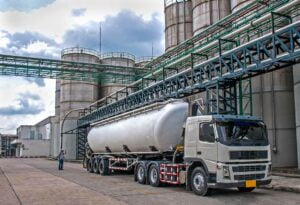pengantar
Wastewater treatment is a critical aspect of environmental protection and sustainable resource management. Sodium formate, a versatile chemical compound, has garnered attention for its potential applications in wastewater treatment processes. This article delves into the intricacies of whether sodium formate is a suitable candidate for wastewater treatment, exploring its properties, mechanisms, advantages, challenges, and its role in advancing effective and efficient wastewater treatment practices.
Understanding Sodium Formate in Wastewater Treatment

Apa itu Natrium Format?
Sodium formate (HCOONa) is a sodium salt derived from formic acid (HCOOH), known for its water solubility and diverse industrial applications. Its unique properties make it relevant in various sectors, including wastewater treatment.
natrium format‘s Role in Wastewater Treatment
1. Chemical Precipitation
Sodium formate can be used in chemical precipitation processes to remove contaminants from wastewater. It forms insoluble precipitates with certain ions, aiding in their removal from the water.
2. pH Adjustment
Sodium formate’s pH buffering capacity makes it useful for adjusting and stabilizing the pH of wastewater. Proper pH control is crucial for optimizing the performance of various treatment processes.
3. Reduction of Heavy Metals
natrium format can be employed in reducing heavy metal ions, converting them into less toxic or insoluble forms that can be easily separated from the wastewater.
Mechanisms and Burstiness in Wastewater Treatment
1. Precipitation Mechanism
Sodium formate’s burstiness in chemical precipitation lies in its ability to form insoluble compounds with specific ions present in wastewater. This burst of reactions results in the removal of contaminants.
2. pH Regulation Mechanism
In pH adjustment, sodium formate’s burstiness emerges as it interacts with acidic or alkaline components in wastewater, quickly stabilizing and maintaining the desired pH range.
Advantages of Sodium Formate in Wastewater Treatment

1. Efficiency in Heavy Metal Removal
Natrium format ability to reduce heavy metal ions to less toxic forms enhances the efficiency of heavy metal removal processes in wastewater treatment.
2. pH Stability
Sodium formate’s buffering capacity aids in maintaining consistent pH levels, which is crucial for the effective functioning of various treatment methods.
3. Environmental Compatibility
Sodium formate is generally considered environmentally compatible, which aligns with the goal of minimizing the environmental impact of wastewater treatment processes.
Tantangan dan Pertimbangan
1. Specific Contaminant Suitability
Sodium formate’s suitability for wastewater treatment depends on the types of contaminants present. Its effectiveness may vary based on the nature of the contaminants and their chemical interactions.
2. Reaction Kinetics
Optimizing reaction conditions and kinetics is essential for ensuring that sodium formate effectively reacts with contaminants and achieves desired removal rates.
Applications of Sodium Formate in Wastewater Treatment
1. Industrial Wastewater Treatment
Sodium formate can be used in treating industrial wastewater containing heavy metals, acids, or alkaline substances. It aids in removing contaminants and adjusting pH levels.
2. Municipal Wastewater Treatment
In municipal wastewater treatment, sodium formate’s pH stabilization properties contribute to maintaining optimal conditions for biological treatment processes.
FAQ about Sodium Formate in Wastewater Treatment
Q1: Can sodium formate replace other chemicals in wastewater treatment?
A1: Sodium formate’s effectiveness depends on the specific contaminants and treatment processes. It can be an alternative or complement to other chemicals depending on the application.
Q2: Is sodium formate safe for aquatic ecosystems after treatment?
A2: When used appropriately, sodium formate is generally considered safe for aquatic ecosystems. However, proper dosage and treatment processes should be applied to prevent any adverse effects.
Q3: Does sodium formate affect the sludge generated during wastewater treatment?
A3: The impact of sodium formate on sludge generation depends on its usage and specific treatment processes. It’s important to consider the overall treatment efficiency and sludge management.
Q4: Can sodium formate contribute to advanced wastewater treatment technologies?
A4: Yes, sodium formate’s properties and mechanisms make it suitable for integration into advanced wastewater treatment technologies aimed at enhanced contaminant removal and process optimization.
Kesimpulan
Sodium formate’s potential in wastewater treatment applications showcases its adaptability and effectiveness in addressing various contaminants and treatment challenges. From chemical precipitation to pH adjustment and heavy metal reduction, sodium formate offers a range of possibilities for improving wastewater treatment processes. While challenges and considerations exist, ongoing research and innovation are likely to further elucidate sodium formate’s role in advancing the field of wastewater treatment, contributing to cleaner water resources and a healthier environment.


